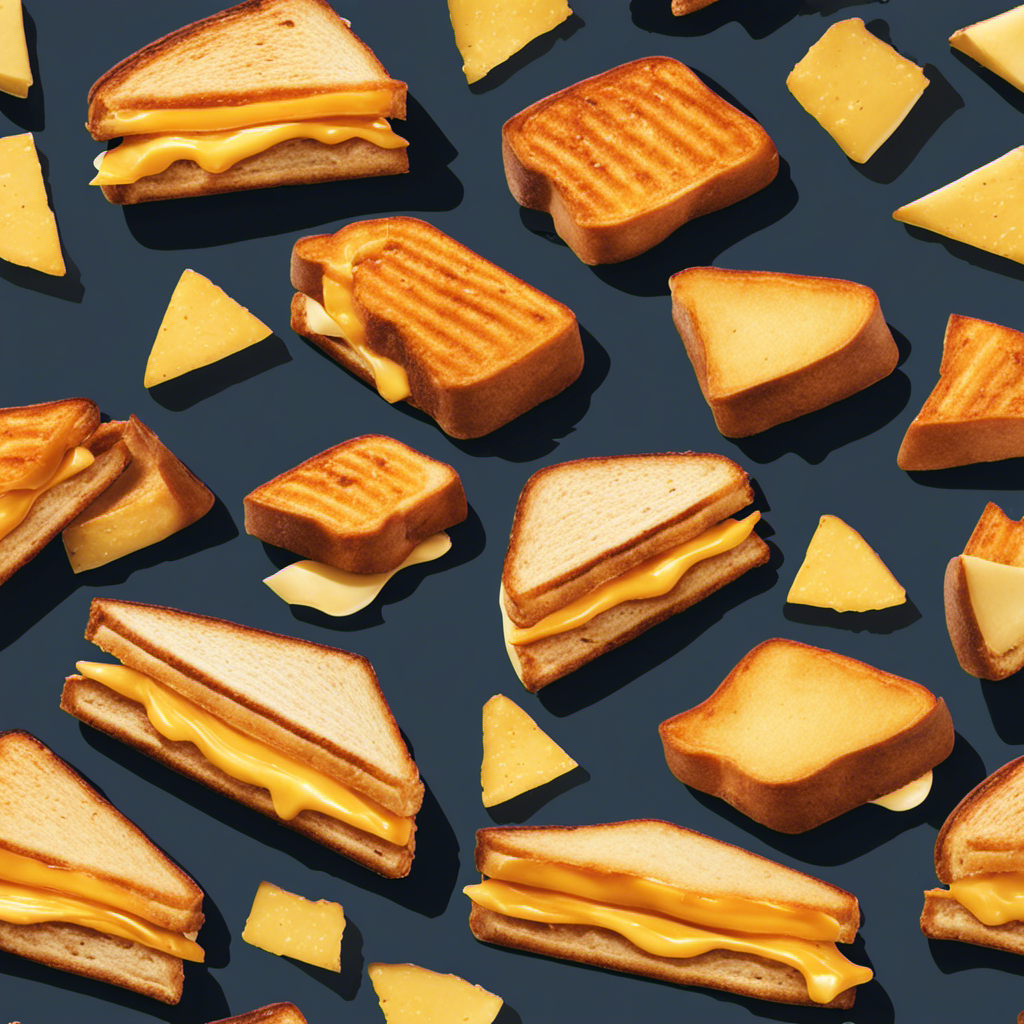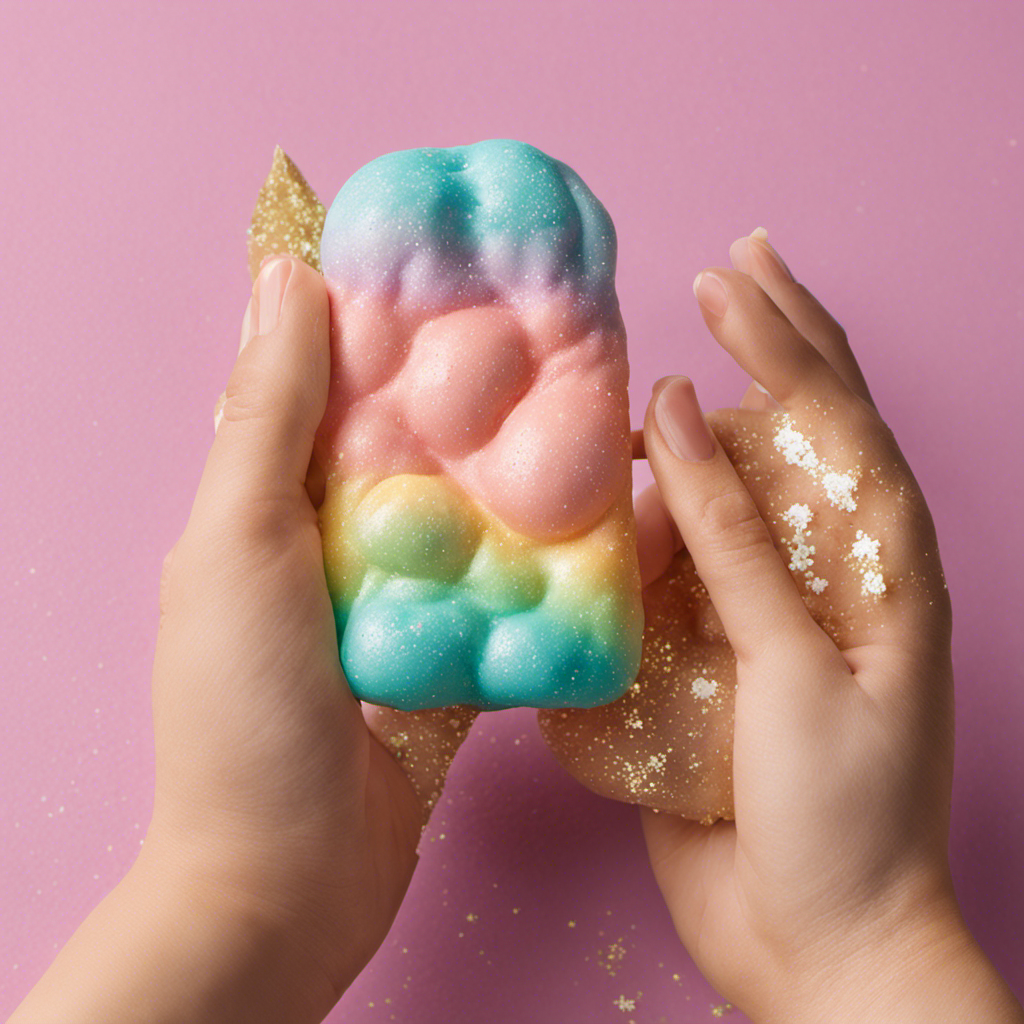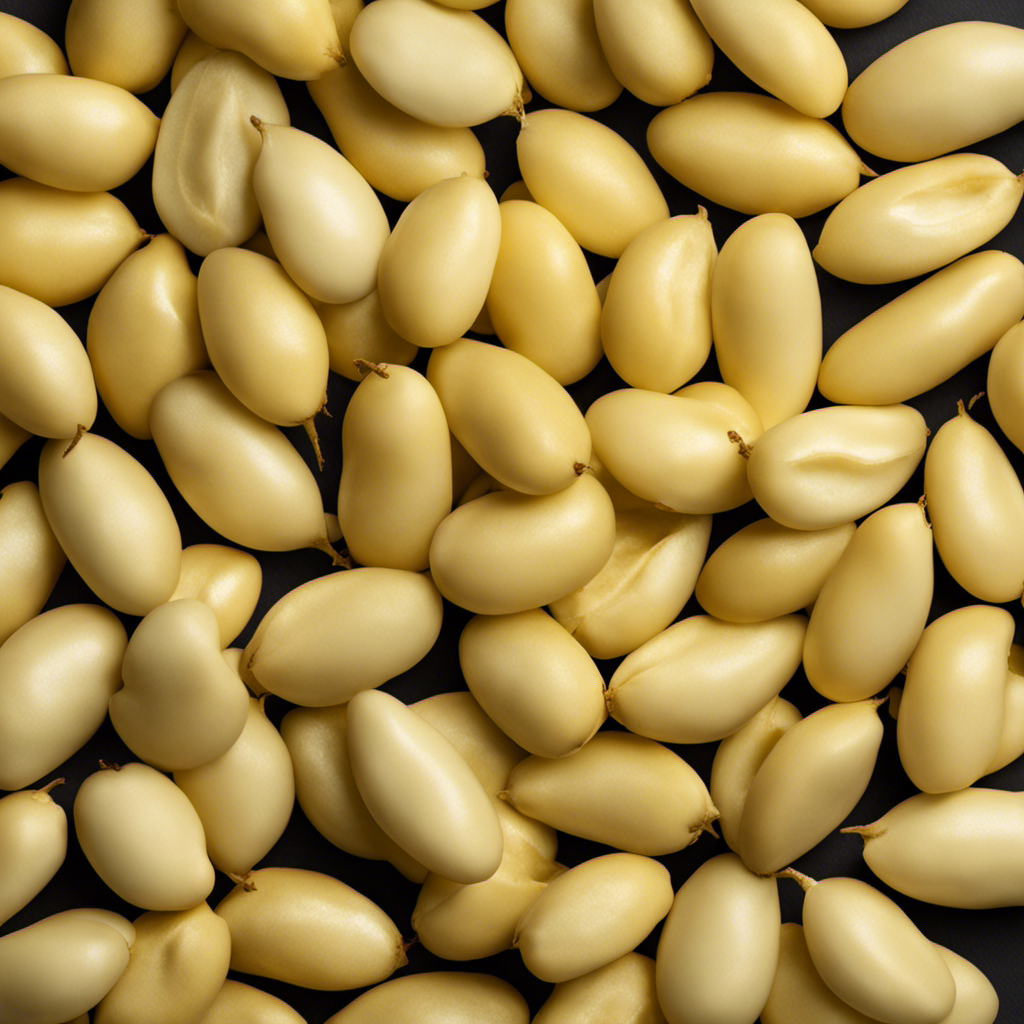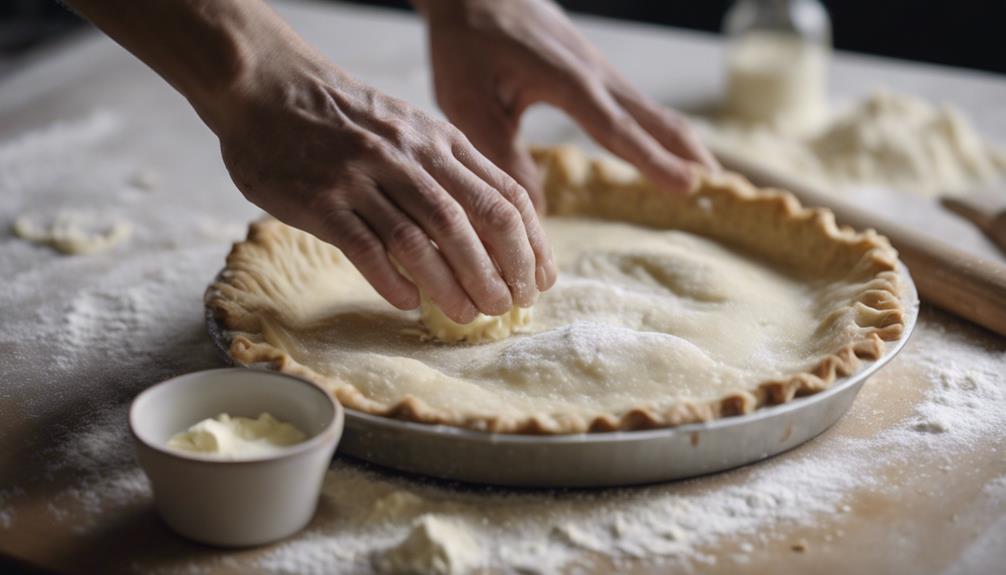Have you heard that **burnt butter** can happen in just half a minute of cooking? It is indeed a quick process! Find out more fascinating facts about this surprising cooking phenomenon that can happen in the blink of an eye. Keep reading to learn more about this interesting cooking tip!
As a culinary enthusiast, I’ve often wondered what burnt butter actually looks like. In this article, I will delve into the science behind burnt butter and explain the telltale signs to look out for.
By understanding the visual indicators and avoiding common mistakes, you’ll be able to prevent burnt butter in your cooking endeavors.
Let’s explore this intriguing topic together.
Key Takeaways
- Butter undergoes chemical reactions when heated past its smoke point, resulting in the breakdown of milk solids and caramelization.
- Burnt butter can be identified by its dark brown or black color, strong unpleasant smell, bitter taste, and production of smoke when heated.
- Burnt butter can be salvaged by straining it and using it in baking or as a flavorful drizzle.
- To prevent burnt butter, use low to medium heat, stir continuously while cooking, set a timer, and consider using alternatives like ghee or clarified butter with higher smoke points.
The Science Behind Burnt Butter
I’ve always been curious about the science behind what happens when butter burns.
When butter is heated past its smoke point, it undergoes a series of chemical reactions. The milk solids in butter, such as proteins and lactose, begin to break down and undergo caramelization. This process produces a distinct nutty aroma and rich golden color.
However, if the butter is left on the heat for too long, it can go from golden brown to burnt. Burnt butter has a strong, acrid taste and a darker color. The burnt milk solids can also affect the texture of the butter, making it grainy and less smooth.
These chemical reactions in burnt butter can significantly impact the flavor and texture of any dish it’s used in, so it’s important to monitor the cooking process closely to avoid burning the butter.
Signs of Burnt Butter
I can tell when butter has been burned by its dark and smoky aroma. Burnt butter is a common kitchen mishap that can happen when the butter is heated for too long or at too high of a temperature. The result is a dark brown color and a strong, unpleasant smell. But fear not, there are ways to salvage burnt butter and even use it in alternative ways. One method to salvage burnt butter is by straining it to remove any burnt bits. This will help to eliminate the bitter taste. Burnt butter can still be used in baking, adding a nutty flavor to cookies or cakes. It can also be used as a flavorful drizzle for roasted vegetables or pasta dishes. So don’t let burnt butter go to waste, get creative and find delicious ways to use it in your cooking.
| How to Salvage Burnt Butter | Alternative Uses for Burnt Butter |
|---|---|
| Strain to remove burnt bits | Use in baking for a nutty flavor |
| ————————— | ———————————- |
| Drizzle over roasted vegetables | |
| ————————— | ———————————- |
| Add to pasta dishes for flavor |
How to Identify Burnt Butter
From its dark color and strong smell, it’s easy to identify when butter has been burned. Here are the common signs to look out for:
-
Dark brown or black color: Burnt butter will have a deep, almost charred appearance. It will no longer have its original golden hue.
-
Acrid smell: Burnt butter emits a strong, unpleasant odor that’s quite distinct from the rich, nutty aroma of properly cooked butter.
-
Bitter taste: When butter is burnt, it develops a bitter flavor that can overpower any dish it’s used in.
-
Smoke: Burnt butter may produce smoke when heated, which is a clear indication that it has been overcooked.
Identifying burnt butter is crucial as it can greatly affect the taste and quality of your culinary creations.
Now that we know how to identify burnt butter, let’s explore the common mistakes people make when cooking butter.
Common Mistakes When Cooking Butter
One common mistake when cooking butter is overheating it, which can lead to a burnt and bitter taste. Overheating butter occurs when the heat is too high or the cooking time is too long. This can happen when melting butter on the stovetop or when using it as a cooking fat. To prevent this, it’s important to keep a close eye on the butter while it melts, ensuring that the heat is low and the process is slow.
Additionally, using a nonstick pan or a double boiler can help regulate the temperature and prevent overheating. If you notice that your butter has started to turn brown or develop a burnt smell, it’s best to discard it and start over. Being aware of these common cooking errors and troubleshooting burnt butter can help avoid unpleasant flavors in your dishes.
Tips to Prevent Burnt Butter
To prevent burning butter, it’s important to monitor the heat and cooking time closely. Here are some tips to help you avoid burnt butter:
-
Use low to medium heat: Cooking butter at high temperatures increases the risk of burning. Keep the heat low to medium to ensure a gentle and even cooking process.
-
Stir constantly: Stir the butter continuously while cooking to distribute the heat evenly and prevent any areas from overheating.
-
Set a timer: Keep track of the cooking time to avoid leaving the butter on the heat for too long. Burnt butter can happen quickly, so it’s important to stay vigilant.
-
Consider butter alternatives: If you’re concerned about burning butter, you can try using alternatives like ghee or clarified butter, which have higher smoke points and are less likely to burn.
Frequently Asked Questions
Can I Still Use Burnt Butter in My Recipe or Should I Discard It?
I can still use burnt butter in a different dish. However, if you’re considering using it in the original recipe, I would advise against it. There are alternative ingredients that can provide a similar flavor without the burnt taste.
Can I Save Burnt Butter and Use It for Another Dish?
I saved burnt butter once and used it in a pasta sauce. Although it had a slightly nutty flavor, it still worked well. Alternative uses for burnt butter include drizzling it over roasted vegetables or using it as a base for a savory sauce.
How Does Burnt Butter Affect the Flavor of a Recipe?
Burnt butter can greatly affect the flavor of a recipe. It adds a nutty and toasty taste, but can also become bitter and unpleasant if overcooked. Properly browning butter is important to avoid this.
Is There a Way to Salvage Burnt Butter and Remove the Burnt Taste?
There are ways to salvage burnt butter and remove the burnt taste. One method is to strain the butter to remove any burnt solids. Another option is to mix it with fresh butter to dilute the burnt flavor.
Can I Prevent Butter From Burning by Using a Lower Heat Setting?
Yes, you can prevent butter from burning by using a lower heat setting. Alternately, you can use clarified butter or ghee, which have a higher smoke point. These methods reduce the risk of burnt butter.
Conclusion
In conclusion, identifying burnt butter is crucial to achieving the desired results in cooking. By recognizing the signs of burnt butter, such as a dark brown color, a strong nutty odor, and a bitter taste, one can avoid common mistakes and prevent the butter from becoming unusable.
Remember, a little extra attention and care can go a long way in ensuring a successful culinary experience. So, keep an eye out for that unmistakable burnt butter aroma and save your dishes from an unwelcome twist!










